This is a continuation of Part 1, which can be read here.
We could also talk about the itch on the sole of my foot as something that occurs “in my imagination”. It is not that I imagine the itch — the itch is very real, all encompassing for me! But I agree that it is different in many or most respects from the lamp-post. We refer to items in our imagination in two ways: (a) as independent of anything that is happening in the world (b) as something which also has a counterpart in our objective world.
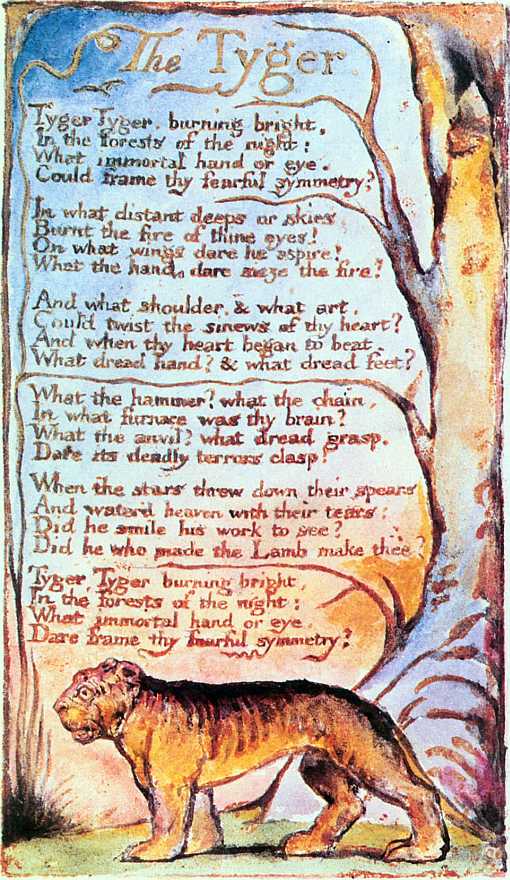 To give an example: the Jabberwocky, described by Lewis Carrol in Alice through the Looking Glass, is an imagined creature that has no counterpart in our normal world although it is kith and kin to other imagined creatures of the “monster class”. Compare this to a predatory tiger which stalks the open fields in search of a prey. This tiger is not described by “Tyger Tyger, burning bright” but can be described in many ways in ordinary language. We can therefore talk about an AJ creature — short for Anti-Jabberwockians — as well as a J creature, which may have “eyes of flame,” whiffles as it moves and “burbles” too. It had a neck! The rest is left to our imagination, stimulated by the sounds of a set of non-descriptive words. Such creatures only exist in our minds, in our imagination and have no counterparts in nature. Don’t look for them! One can add to their attributes, but we do not expect that the same additional attributes will be discovered by other people as they roam through their imaginations.
To give an example: the Jabberwocky, described by Lewis Carrol in Alice through the Looking Glass, is an imagined creature that has no counterpart in our normal world although it is kith and kin to other imagined creatures of the “monster class”. Compare this to a predatory tiger which stalks the open fields in search of a prey. This tiger is not described by “Tyger Tyger, burning bright” but can be described in many ways in ordinary language. We can therefore talk about an AJ creature — short for Anti-Jabberwockians — as well as a J creature, which may have “eyes of flame,” whiffles as it moves and “burbles” too. It had a neck! The rest is left to our imagination, stimulated by the sounds of a set of non-descriptive words. Such creatures only exist in our minds, in our imagination and have no counterparts in nature. Don’t look for them! One can add to their attributes, but we do not expect that the same additional attributes will be discovered by other people as they roam through their imaginations.
This difference in the conditions under which one believes in the reality of things between J’s and AJ’s is important.
What is an AJ? What is a J?
Those of us who are J’s are traditional believers; their beliefs could include that Jabberwockies exist, so that if there is one presumably there are many! This conclusions follows from the more abstract belief that all creatures have parents even when these have not been sighted, i.e. they could be sighted, could be discovered, are discoverable — therefore must be found!
AJ’s, on the other hand are believers who demand that on every occasion solid grounds must be given for things/events in which we are asked to believe. They advocate a rigorous acceptance-principle, which is applied to every instance where a belief is actively promoted. Such beliefs are often promoted by an interest group — of which there are very many! I think Alice herself is an AJ. Even very young little North American girls (and boys, of course) often become convinced AJ’s quite early in their lives, e.g. most believe in Father Christmas, as toddlers, or in the tooth-fairy, but both beliefs are gradually shed.
Furthermore, AJ’s adopt moveable, flexible demarcation criteria, which change over time and experience. Thus, they tend to be comfortable with the idea that what was “ true” — and therefore real — yesterday (!) may not be so tomorrow. Indeed reality itself becomes a changing idea: the world may not be a sea of chaos — as many philosophers once surmised — but it is not a like a sheet of calm unruffled water either.
AJ’s therefore reserve judgements about whether creatures of the imagination can (or do) retain their legitimacy for long or whether legitimacy implies that there are strictly enforcable legitimation rules which are unbreakable, and cannot be revised. Of course, such rules need to be justified on other grounds than that these are mere momentary convenience! Much of the work by contemporary philosophers of science (a separate breed!) has been devoted to this task. Often their work has de-legitimized earlier research by demonstrating that so-called firm conclusions were prematurely reached, since the methods of data collection and date treatment was unwarranted, that is, cannot be justified by today’s standards. Medical research has been particularly hard hit since all too often studies on, for example, the short and long term effects of medication, require elaborate designs and procedures which could endanger the subjects of the investigations — and could therefore not be undertaken at this time.
But placing restrictions on what can be done in an experiment also places limits on the interpretation of the data collected on such occasions: the jury is out, so to speak! Of course, when this is so it limits the validity and generality of any conclusion reached at the end of the investigation. “The jury is out” is in fact an important contribution to research: it limits what can be concluded, what matters can be temporarily included in the “Book of Truths”!
It therefore immediately influences the integrity of any model which was involved in the inquiry itself and therefore also of the theory being “tested” directly or indirectly by the experimental investigation. From one point of view, this scenario is a downer for researchers, for people who are usually committed to the theory being tested. To be sure, there are those whose primary interest is in “discovery” — or as is often said “in the facts” — whereas others are tuned into the validity of the theory which generated the predictions being tested. Theories — one could say — are not discovered, but created, whereas facts are uncovered.
It seems from all this that Jabberwockians (the J’s) are the salt of the earth given that they are willing to entertain a world which is by no means coherent, and are those who are willing to walk into positions which are not laced up by tight strands of logic. Anti-Jabberwockians (AJ’s), on the other hand, can be insufferable because they insist that creatures like the Jabberwocky don’t make sense, that creatures of the imagination always have to stand the test of logical coherence before these creatures can be declared as real. It is not a matter of “value”, but a matter of what furniture has been placed into each room in our complex living space and of how flexible we are in our demands for attains the best of all possible worlds.
This is the second of a 3-part blog. Part 3 will appear in a few days.

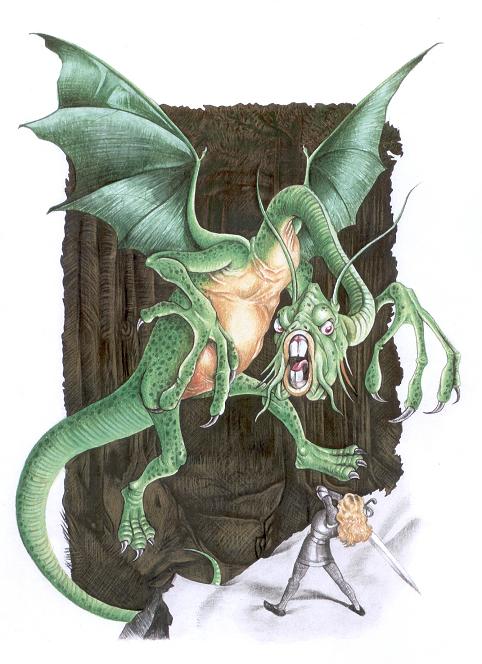 The J’s therefore believe in the (real) possible existence of creatures of their imagination, just as they believe in their own existence (I think therefore I am) but also in the reality of butterflies. The follow-up question is, “What creatures in their imagination do not exist and are therefore imaginary?” This question demands that we submit a set of criteria which demarcates creatures that are officially real from those deemed non-real. By what standards can these two classes of creatures be reliably identified?
The J’s therefore believe in the (real) possible existence of creatures of their imagination, just as they believe in their own existence (I think therefore I am) but also in the reality of butterflies. The follow-up question is, “What creatures in their imagination do not exist and are therefore imaginary?” This question demands that we submit a set of criteria which demarcates creatures that are officially real from those deemed non-real. By what standards can these two classes of creatures be reliably identified? It had received support from both Plato and Aristotle although it was clear to them — and to others — that the supposition that the world was constituted in such a manner would have to remain entirely speculative. Methods to test whether indeed such “entitites” as atoms could be discovered — were not available. However there were some who believed that sooner or later suitable instruments would be invented to do so, a hope which helped sustain the wide-spread cosmological view that nature in its physical manifestations could be “revealed”, that the appropriate information would ultimately become available to us.
It had received support from both Plato and Aristotle although it was clear to them — and to others — that the supposition that the world was constituted in such a manner would have to remain entirely speculative. Methods to test whether indeed such “entitites” as atoms could be discovered — were not available. However there were some who believed that sooner or later suitable instruments would be invented to do so, a hope which helped sustain the wide-spread cosmological view that nature in its physical manifestations could be “revealed”, that the appropriate information would ultimately become available to us.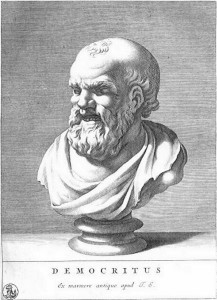 Thus, the atoms of Democritus, small, unobservable, and presumably indestructible entities invented c. 600 BC, were entirely speculative. Their nature was unknown but were guessed at. Democritus put out ideas, based on speculations of earlier thinkers, including seers and poets, which others of course were free to accept on the basis of its intuitive appeal, as well as any force of arguments advanced in their favour!
Thus, the atoms of Democritus, small, unobservable, and presumably indestructible entities invented c. 600 BC, were entirely speculative. Their nature was unknown but were guessed at. Democritus put out ideas, based on speculations of earlier thinkers, including seers and poets, which others of course were free to accept on the basis of its intuitive appeal, as well as any force of arguments advanced in their favour!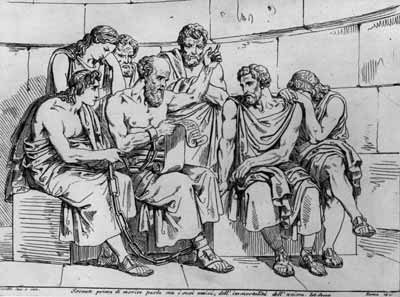 I interpret this to mean that anything claimed “to be” also exists. Note that terms like *entity*, *substance*, and *object* were already used by Greek writers (before 450 BC) and continued to be used as a vital part of the vocabulary by philosophers from then until the present day. Of course the meaning has changed over time. However our uninterrupted use of the term indicates that we are able to make good use of the it even when its meaning (as in interpretation) changes. As with so many words meaning and interpretations change often, even imperceptibly, throughout the past hundreds of years.
I interpret this to mean that anything claimed “to be” also exists. Note that terms like *entity*, *substance*, and *object* were already used by Greek writers (before 450 BC) and continued to be used as a vital part of the vocabulary by philosophers from then until the present day. Of course the meaning has changed over time. However our uninterrupted use of the term indicates that we are able to make good use of the it even when its meaning (as in interpretation) changes. As with so many words meaning and interpretations change often, even imperceptibly, throughout the past hundreds of years.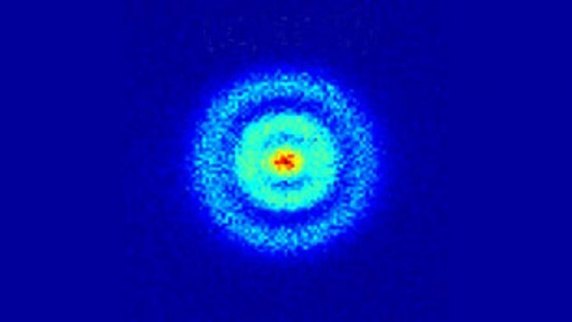 An early example of such a challenge occurred in approximately 550 BC when several Ionian thinkers suggested that the physical world — the world of physical objects and their interactions — had been constructed by unknown forces from one or more basic fundamental materials, i.e. atoms, the indivisibles. Two factors were speculated: one, material objects in their most fundamental, most primitive forms; and two, the manner by which these were structurally related. The former (*atoms*) were not considered by Greek thinkers to be pliable, whereas *forms* or *structures*, it was assumed, were. It was not clear by what rules these “atoms” has been assembled to become new entities, new phenomena, but it was assumed that knowledge about how this happened could ultimately be gained — although not how this knowledge could be gathered.
An early example of such a challenge occurred in approximately 550 BC when several Ionian thinkers suggested that the physical world — the world of physical objects and their interactions — had been constructed by unknown forces from one or more basic fundamental materials, i.e. atoms, the indivisibles. Two factors were speculated: one, material objects in their most fundamental, most primitive forms; and two, the manner by which these were structurally related. The former (*atoms*) were not considered by Greek thinkers to be pliable, whereas *forms* or *structures*, it was assumed, were. It was not clear by what rules these “atoms” has been assembled to become new entities, new phenomena, but it was assumed that knowledge about how this happened could ultimately be gained — although not how this knowledge could be gathered.
 The terms “light” and “dark”, or “hot” and “cold” refer to relative contrasts; whereas “dead” and “alive” refer to opposite and exclusive contrasts of states, or conditions. We also contrast between events by using the adjectival form of a noun, as when we refer to a piece of bread — unquestionably an object — as “stone-hard” or perhaps as “doughy”. In short, nouns are often adapted to serve as adjectives, as qualifiers.
The terms “light” and “dark”, or “hot” and “cold” refer to relative contrasts; whereas “dead” and “alive” refer to opposite and exclusive contrasts of states, or conditions. We also contrast between events by using the adjectival form of a noun, as when we refer to a piece of bread — unquestionably an object — as “stone-hard” or perhaps as “doughy”. In short, nouns are often adapted to serve as adjectives, as qualifiers. The emphasis is on “authentic”, which requires the explicit consent of others. It is often difficult to attain. There are exceptions, as when someone converts from one religious group to another, which involves an overt switch between highly differentiated social groups — each of which may hold strong and competing views about about specific areas of a common world.
The emphasis is on “authentic”, which requires the explicit consent of others. It is often difficult to attain. There are exceptions, as when someone converts from one religious group to another, which involves an overt switch between highly differentiated social groups — each of which may hold strong and competing views about about specific areas of a common world.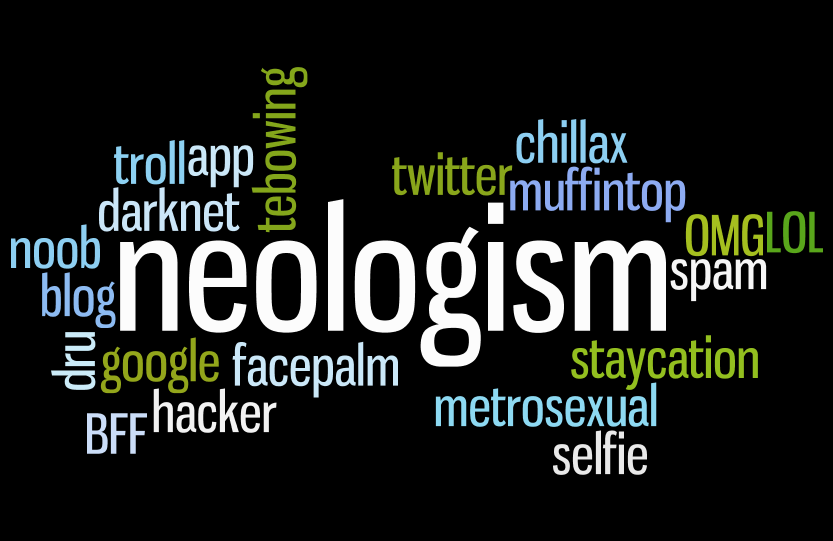 In a previous blog I suggested that any new English words, or neologisms, could be submitted to a computer search of the digitalized English literature, say from Beowulf onward, in order to discover whether the term of interest had previously been used. In what manner was its earlier use, its context of use, different from what is now proposed?
In a previous blog I suggested that any new English words, or neologisms, could be submitted to a computer search of the digitalized English literature, say from Beowulf onward, in order to discover whether the term of interest had previously been used. In what manner was its earlier use, its context of use, different from what is now proposed? One can select any number of terms in our everyday vocabulary and draw a network of how each term is (or is not) related to some (but not all) other terms of the language. By the same token, if you select any term within an extant language you can show to what other terms in that language it is related. One can use distance, as well as the size of the area covered by a term, or the direction of the connecting link to “map” the relationship between different term. However the nets are multi-directional; the space is n-directional. I add another feature: temporality, that is that nets develop over time so that a shift in the net may influence large areas, a kind of ripple effect which spread from an impact point to distant places, yet does not extend over all surfaces.
One can select any number of terms in our everyday vocabulary and draw a network of how each term is (or is not) related to some (but not all) other terms of the language. By the same token, if you select any term within an extant language you can show to what other terms in that language it is related. One can use distance, as well as the size of the area covered by a term, or the direction of the connecting link to “map” the relationship between different term. However the nets are multi-directional; the space is n-directional. I add another feature: temporality, that is that nets develop over time so that a shift in the net may influence large areas, a kind of ripple effect which spread from an impact point to distant places, yet does not extend over all surfaces.